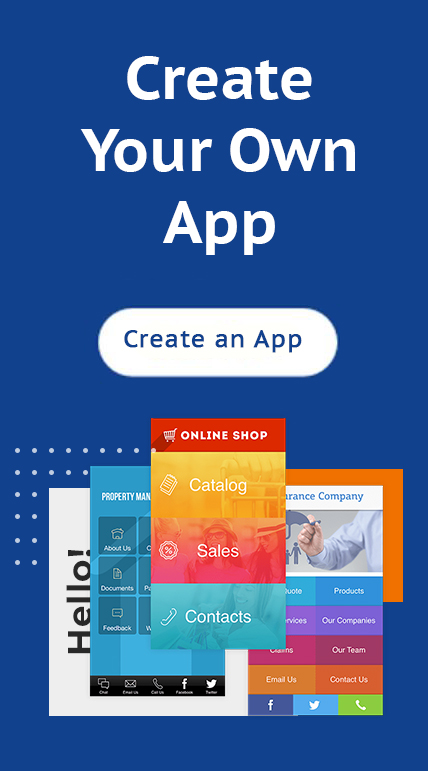A well-designed and user-friendly mobile app can significantly boost your business growth, enhance customer engagement, and provide a competitive edge in the market. However, creating a successful mobile app requires careful planning and execution.

In this blog post, we will explore how to create a mobile app and the essential steps to help you create the right app strategy to help skyrocket your business.
Define Your Goals for Your Mobile App
Defining and documenting your goals is the essential first step in creating a mobile app that will meet your business objectives. For example, increasing sales or improving customer satisfaction or engagement.A clear understanding of the goals is important because it will help you create the right features, functionality, and user experience that target your audience’s preferences and align with your business purpose.
After setting app development goals, you can start developing clear KPIs (key performance indicators) that can help to identify the success of your application. The KPIs depend on the goals you have set, but typically they focus on the app’s user engagement, retention, active users, downloads, and conversion metrics, among others.
Determine Your Target Audience
Knowing your audience is one of the most critical factors when crafting an app for your business. It helps to avoid common pitfalls in development, which can lead to poor downloads and feedback.Tried-and-trusted methods such as demographics, detailed market research, and thorough customer feedback can all help in identifying the needs of your intended users and ensuring a targeted experience that meets their needs.
By building your app with your users in mind by taking account of all ranges of user scenarios, from ultimate objectives to environmental waiting time and intermittent internet services; companies can increase user satisfaction, decrease download cancellation, and ultimately maximize ROI.
Choose Your App Development Strategy
Once you have established objectives and what you’re building (not to forget the budget and your developers’ capability and experience), establish what tech stacks your app needs to deliver the desired results; ask expert guidance if necessary.Knowing your platform decision helps shape your app development roadmap, projecting feasibility, timeframe, and cost assumptions. App store submission guidelines change frequently, so it is essential to identify app development and management costs to estimating the initial deployment costs.
When considering your development strategy, consider numerous variables, such as user experience, project time frames, overall cost, and the number of developers/engineers involved. If it’s an issue, consider cheaper hybrid models that compromise on unique elements of the app that become impossible to ignore on costly custom native applications.
Identify Mobile App Design Templates
Good mobile app design templates can make a business stand out from the competition. User interface (UI) templates for mobile apps help add consistency to app developmentfor instance, by using responsive and scalable buttons and graphics, integrations with professionally design graphics software such sketch or expertise with responsive web design.Mobile app design templates often span across multiple categories to best suit your project – with both platform design language systems available specifying, Android Material design or Apples iOS Design with Human Interface Guidelines. Once, companies have prototyped” variants of app interface through different design tools such as UI Sketching Tool, apps, or similar, before selection of templates.
Investing in choosing the right templates for your business application would be advantageous, lowering the risk of shoddy ROI-centric app investment.
Develop a Mobile App Brand Strategy
Companies considering mobile apps for business need to understand the User Interface (UI); ensuring brand strategy runs coherently throughout. When creating a complex UI, its crucial to maintain clarity and consistency with your messaging that aligns.Ultimately the aim is that customers, take one look at your app interface, and recognize your design as synonymous with your business or brand. Developing good branding includes creating clear guidelines around the color, layout, and design of the app, across multiple platforms and devices.
Brand consistency is essential to keep users focussed on the greater gist of the app’s business utility. Creating a unique value proposition for your mobile app with highlighted features values can go a long way in boosting user engagement.
Test, Launch, and Market Your Mobile App
Before release of an application occurs, the issue to deal with today and creates a barrier to adoption is consumer cybersecurity, easier contact with support, and the resolution of functionality issues. Testing every feature is a fundamental part of the development process. Test the app carefully under controlled and uncontrolled scenarios to discover bugs and get valuable feedback that can improve your application experience.Once you have tested the application’s performance and delivered a stable and user-friendly product, kick-starting your marketing process is imminent. Connecting the app promotion and creating customer behaviors to boost positive engagements across other physical areas often displays a period of reduced launches.
Once implemented, with positive ROI feedback or reviews, attention turns to paid advertising channels such as, Google Ads, Facebook Ads, and Apple Search Ads.
Take the marketing approach extra by considering social media channels to lure in product promotion and reach more potential clients. Create social networking pages for your mobile app on Facebook, Twitter, and Instagram.
Share your app downloads several benefits and seek feedback to help correct mistakes and give your product some Public relations grit. Promote reviews forthcoming product milestones, raise interest, curiosity, and new viable customers.
Now You Know How to Create a Mobile App
Creating a mobile app may seem like a complex endeavor, but by following our guide above on how to create a mobile app, you can turn your app idea into a successful reality. So, start brainstorming, planning, and building your app, and watch your business soar to new heights in the mobile world.Make sure you contact us if you are ready to create your own business mobile app.
